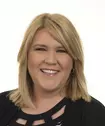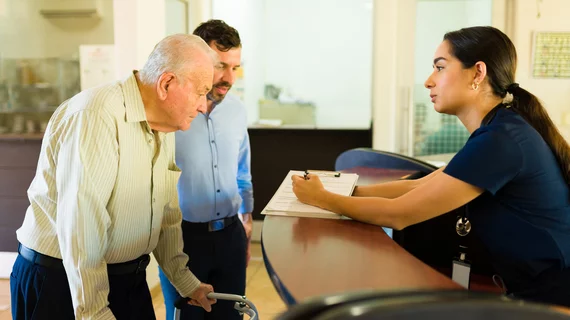Structural heart clinics see key benefits from improved referral tracking
Identifying patients with severe aortic stenosis who could potentially benefit from transcatheter aortic valve replacement (TAVR) is very important—but managing and tracking them over time can be quite a challenge.
Whether patients receive the care they need ultimately comes down to several factors, including the healthcare system’s ability to track patients and data. Without an effective, efficient system in place, the health care system runs the risk of delaying patient care and even losing track of patients altogether.
Riverside Methodist Hospital in Columbus, Ohio, has experienced firsthand the considerable value that can be gained by investing more time and energy into tracking patients as they move through the referral and post procedural processes.
Riverside is a 1,059-bed teaching hospital, the largest in the OhioHealth system. McConnell Heart Hospital at Riverside Methodist, with a long history of treating structural heart patients, is a key piece of Riverside’s continued success.
When program lead nurse practitioner Ileah R Reichert, CNP, joined the structural heart team in 2017, she was surprised to learn her colleagues were still relying on paper charts and excel spreadsheet systems to track and manage patient throughput. Even with an electronic medical record (EMR) in place, a number of the tasks that care teams typically use the EMR to handle—including patient referrals—were still handled manually. Reichert quickly realized that this was holding Riverside, and its physicians, back from reaching their full potential.
“It became clear we needed a way to improve our processes; for our patients, our providers, and for the sanity of our staff,” she says. “Our coordinators had an intricate organizational system in place between stacks of paper charts and spreadsheets, and while it worked for them individually, it was a complicated process that ultimately had them tied to their ever-increasing workload. In addition, our physicians were requesting real-time outcomes data, but our registry system was consistently delayed by several months.”
Moving on from paper charts: Goodbye clutter and confusion
Not long after settling in, Reichert implemented a data tracking system called REDCap that was already being used at Riverside for data management. Patients are entered into the system as soon as they are referred to Riverside, and the coordinators are able to direct the patient’s clinical course quickly through the entire process.
“It’s imperative that we have a system in place that allows a bird's-eye view of where all our patients are in their workup from referral to follow up,” Reichert says. “Additionally, our coordinators needed an ability to job share. They have the right to step away and know that their work is continuing without delay for the patients or increased workload when they return. They are no longer the only person who knows the tracking system.”
There was a bit of pushback from the staff at first, but it didn’t take long for everyone at Riverside to appreciate the upgrade. TAVR referrals were the first to be switched to the new system, she says, because the process is very specific and predictable. Mitral, tricuspid, and left atrial appendage closure patients, on the other hand, who have many more variables to consider, took a little longer to convert from the paper charts to the new data tracking system. It was not long, however, before the coordinators had worked together alongside RedCap administrators to make the program work for them all.

“I’m always looking for ways to improve care for our TAVR patients and help the healthcare providers who take care of them. We are always looking to make this complicated coordination more efficient. We want to ultimately grow our already robust program, and these improvements are the first step in that direction.”
Ileah Reichert, CNP, TAVR Program Lead Nurse Practitioner, Riverside Methodist Hospital, Columbus, Ohio
More recently, Reichert has found that she also can use the new-look tracking system to keep an eye on patient outcomes, including post-TAVR complications such as paravalvular leak, bleeding events, and stroke. Consistently monitoring complications has helped Riverside’s team judge the effectiveness of change implementation.
“The real-time data we have now has been instrumental in evaluating effectiveness,” she says. “If we want to implement change, we can learn rather quickly if it was a success or not.”
One the biggest pieces of evidence that Riverside’s manual tracking system has made an impact is the improvement in groin complications. By tracking data and evaluating each operator’s technique, Reichert and her team were able to drastically reduce the number of complications by ensuring everyone’s closure was performed in the exact same way every time. The group was also able to stop unneeded procedures by examining pacemaker rates, characteristics of patients with post-TAVR electrical abnormalities and implementing outpatient monitors for high-risk patients.
“Patients are able to discharge home sooner and safer than ever before,” Reichert says.
In addition, the team at Riverside is spending less time inputting data and shuffling through papers and more time interacting with patients.
“This has dramatically reduced a lot of our workloads,” she says. “If you need an answer, on any patient, you can open up the system and find it quickly, even if you happen to be away from the office for any reason. Our coordinators have more freedom now.”
Looking ahead, Reichert hopes she can continue improving Riverside’s referral process.
“I’m always looking for ways to improve care for our TAVR patients and help the healthcare providers who take care of them,” she says. “We are always looking to make this complicated coordination more efficient. We want to ultimately grow our already robust program, and these improvements are the first step in that direction.”
Automated referral tracking makes an immediate impact
At the University of Alabama Birmingham (UAB), Laura Raye Byrd, operations manager for the facility’s structural heart clinic and interventional cardiology offices, has witnessed huge improvements in UAB’s ability to track patient referrals. The key to her team’s success? Automated referral tracking.
Byrd recalls working in a cardiovascular surgery office that tracked all referrals manually. As rewarding as the job was, tracking patients was awkward and tedious.
“When a referral came in, I would get a text message asking me to bring a certain patient in,” she explains. “I would often have a first name for the patient, but no last name or date of birth, which sent me scrambling around just to get some answers.”
If it wasn’t a text message, Byrd adds, it would be a letter in the mail or a fax. Sometimes, it was a sticky note with minimal patient information that showed up when she was away from her desk.
“It was a lot of information coming from all different angles,” she recalls.
In her current position at UAB, however, Byrd says tracking patient referrals is much more efficient. This high-volume facility gets approximately two dozen TAVR referrals a week, in addition to patients in need of a variety of other structural heart procedures. When UAB’s leaders saw how many new patients were being brought in on a regular basis, they chose to invest in VitalEngine, a cloud-based, HIPAA-compliant automated software solution designed to be a one-stop shop for the entire referral process.
The tool allows referring providers to log in and share the patient’s name, date of birth and reason for referral, Byrd explains. Then they simply send a note through the software—no text messages, faxes, phone calls or sticky notes necessary—and UAB’s coordinators can reach out to set up an appointment for the patient to come in.
But there’s much more to the referral process than simply handing off patients. Automated referral tracking also serves as a bulletin board, a conference room and a group text thread, connecting the entire care team.
“We can communicate as needed within the software,” Byrd says. “There’s no phone tag, no wasted time. It all takes place right there, where everyone is already connected. If our team needs an alternate phone number for a patient, for example, or if one of our surgeons wants to see how many TAVRs are scheduled for a certain week, all of that communication happens in one convenient place.”
The front desk employees at UAB’s structural heart clinic are grateful too.
“They were always the ones taking phone calls about referrals, often spending 10 minutes at a time just to secure one basic piece of information,” she says. “I bet this updated process saves them two hours per day, maybe more.”
When patients are sent to UAB’s structural heart clinic, their referring physician has already determined they have severe aortic stenosis. The next steps, however, are up to the clinic’s team of cardiologists and surgeons, who confirm the referring doctors’ findings, order echocardiograms and schedule appointments and procedures. All of these actions are stored and recorded in VitalEngine, keeping everyone on the same page as the patient moves through the care process.

“It’s amazing to see the changes that can come from improved referral tracking.”
Laura Raye Byrd, Operations Manager, Structural Heart Clinic and Interventional Cardiology Offices, University of Alabama Birmingham
The software also helps UAB keep track of how many procedures they receive from each physician, helping to improve relationships between the clinic and referrers. This helps UAB identify any potential issues that need to be addressed—and they sometimes do exactly that.
“We had one referring doctor who was sending us TAVR patients all of the time,” Byrd says. “Suddenly, for a few months, we realized we were not seeing any new referrals from him. We only had that data thanks to our built-in referral analytics. It helped us reach out to him, connect again and continue that important relationship.”
Overall, UAB is treating more structural heart patients than before—and at a much faster rate—since the program adopted automated referral tracking in 2018. In fact, the patient volume has skyrocketed in recent years—the program received 788 patient referrals in 2019, for example, but 1,975 just two years later in 2021 and 2,693 in 2022. The number just keeps getting bigger and bigger.
“It’s amazing to see the changes that can come from improved referral tracking," Byrd says.
She also estimates that TAVR turnaround times have gone from approximately three weeks to one or two weeks thanks to the use of automated referral tracking. Similar improvements have been seen in the response times for other key structural procedures, including those focused on the mitral valve and left atrial appendage closure.
The software has even improved UAB’s telemedicine offerings, allowing the team to schedule and carry out post-op check-ups without adding any unnecessary steps. Byrd says the facility’s nurse practitioners appreciate the way this ramps up patient care and makes scheduling crucial appointments so much easier for both UAB staff and patients.
For more information on VitalEngine, click here.

